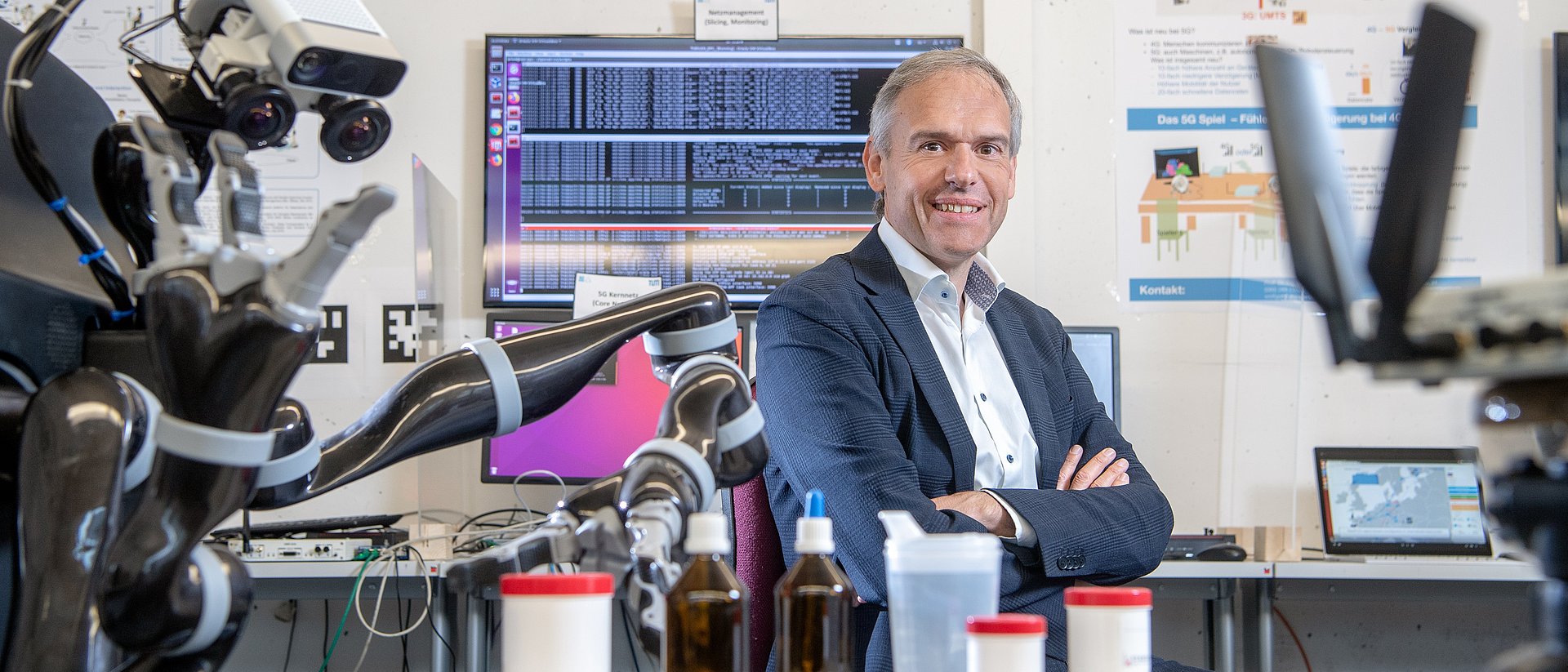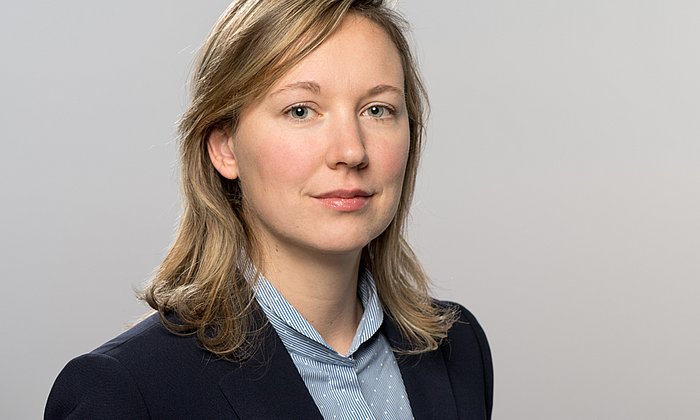Prof. Wolfgang Kellerer on the next wireless communications generation
“6G will be human-focused”

The 6G Future Lab Bavaria at TUM is regarded as Germany’s largest university research project for the sixth wireless communications generation. The project is part of the Bavarian 6G initiative, for which the Bavarian Ministry of Economic Affairs will provide at least 5 million euros in funding. Over the next three years, 12 research professorships will develop fundamental mechanisms for 6G and draw up a roadmap for its standardization and rollout. Project leader Prof. Wolfgang Kellerer is also one of the two spokesmen for the Thinknet 6G platform, which will be launched today by Bayern Innovativ as another building block in the Bavarian initiative to promote the networking of all relevant actors.
The 5G wireless standard is not yet available everywhere – and you’re starting work on the next generation. Is 5G already obsolete?
5G will still be there even after the next wireless generation is launched. But there will be differences in the applications: 5G plays a vital role for Industry 4.0, facilitating a new dimension of machine-to-machine communication. In 6G, the focus will be on humans and their surroundings.
But you don’t mean humans and their phones?
Not primarily. It’s more about a wide range of technologies integrated into our everyday lives that we interact with almost without thinking about it, thanks to excellent wireless communications and sensor technology. It might be robot assistants in the household, high-resolution 3D maps for self-driving vehicles or holograms enabling us to visualize people we are talking to. With 6G, remote-control surgery and other applications requiring precise positioning of equipment will become a reality.
What bandwidths will 6G be capable of?
We believe that the higher frequencies used for 6G will allow a data transfer rate of one terabyte per second. However, the speed records are not the main priority in our research program. We want to lay the foundation to achieve the highest fail-safe standards, shortest latency times and maximum energy efficiency. We also want to create new processes to ensure data security even when quantum computers are used.
At first glance, those look like secondary criteria.
On the contrary: those are the essential points for the high-tech applications that represent the promise of 6G. Think of telesurgery, for example. When lives are at stake, we can’t settle for 99.9% reliability. For the 6G network, we are aiming for 99.999999999% fail-safe reliability.
Another example is the scenario where humans and robots work together. If these assistants are used in everyday life or nursing care settings, they will be very close to people. For that reason, when controlling them, latency – in other words the time lag when processing wireless signals – has to be close to zero. After all, just one false reaction by a robot could cause personal injury or property damage in a split second. For 6G we want to achieve latencies well under one millisecond.
We want these specifications to be guaranteed for end-to-end communications across multiple networks – because communications are not generally limited to the network of one provider. That might sound trivial, but it involves enormous challenges. Finally, we want the entire network to be intelligent.
What does intelligence mean for a wireless network?
With artificial intelligence, the network can conduct its own calculations to continuously optimize itself. It should be flexible and adaptable to the point where it can deliver the required performance when and where it is needed.
6G will be the first wireless communication generation in which the network works together with countless sensors positioned in the networked devices such as robots and self-driving vehicles. At the same time, the network can now become a sensor itself, with the wireless signals being used to obtain certain information such as the presence of an object between the transmitter and receiver. The AI technology can then use all these data to create a picture of the user’s surroundings and the communication requirements and adapt the network accordingly.
The big challenge is to develop network architectures that are able to make optimal use of the characteristics of different sensors and are also trainable. Consequently, a core element of our research is digital twins. These virtual images of objects are already being used in industry. For example, a computer creates a detailed digital replica of a manufacturing plant. This makes it possible to explore and optimize the workings of the plant. We want to create digital twins of the network and its components to optimize them with machine learning methods.
When will 6G be ready to use?
Experience shows that it takes around 10 years to develop a new wireless generation. To be ready for a big rollout in the early 2030s, those of us doing basic research want to work with the other key actors right from the start to lay the groundwork for success. We want to learn about the expectations of the business sector and society at large. This networking will now take place on the Thinknet 6G platform.
In the context of the wireless generation cycle, we are actually starting earlier than usual with the development of the next generation.
Does this mean that Germany has a chance to play a leading role in 6G?
Yes. We want to create the conditions for companies to be among the leaders right from the start. We want to see start-ups emerging and to produce leading experts through our degree programs.
And with vital infrastructure of this kind, sovereignty is also a top priority. When network components fail, we must always be in a position to replace each and every one of them ourselves.
About Wolfgang Kellerer:
Prof. Wolfgang Kellerer holds the Chair of Communication Networks at TUM. He previously worked in industry and at Stanford University. His research focuses on fundamental methods for communication networks. Prof. Kellerer is a member of the scientific board of the Federal Network Agency of Germany and the Dean of Studies of the Department of Electrical and Computer Engineering at TUM.
- The following TUM professorships are participating in the Bavarian 6G Future Lab: Communication Networks, Media Technology, Theoretical Information Technology, Network Architectures and Services, Data Processing, Machine Learning, Integrated Systems, Communications Engineering, Connected Mobility, Security in Information Technology, Methods of Signal Processing, Coding for Communications and Data Storage.
- Thinknet 6G network platform
- The Bavarian 6G Initiative is operating as part of the Hightech Agenda Plus of the Bavarian state government.
Technical University of Munich
Corporate Communications Center
- Klaus Becker
- klaus.becker@tum.de
- presse@tum.de
- Teamwebsite
Contacts to this article:
Prof. Dr. Wolfgang Kellerer
Technical University of Munich (TUM)
Chair of Communications Networks
Tel.: +49 89 289 23500
wolfgang.kellerer@tum.de


